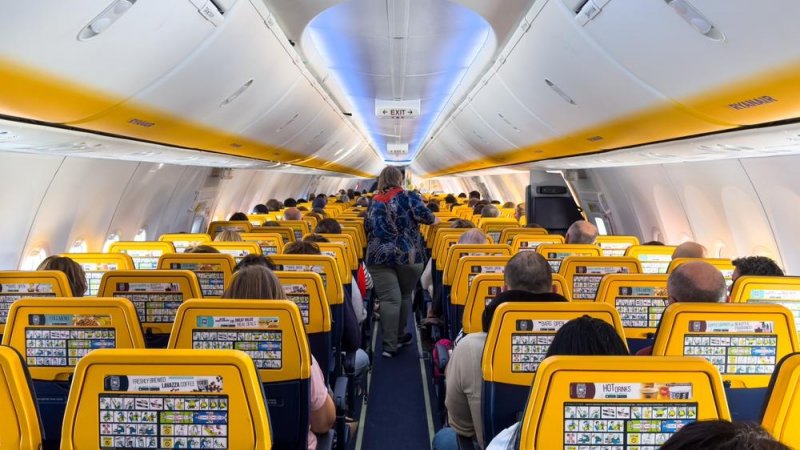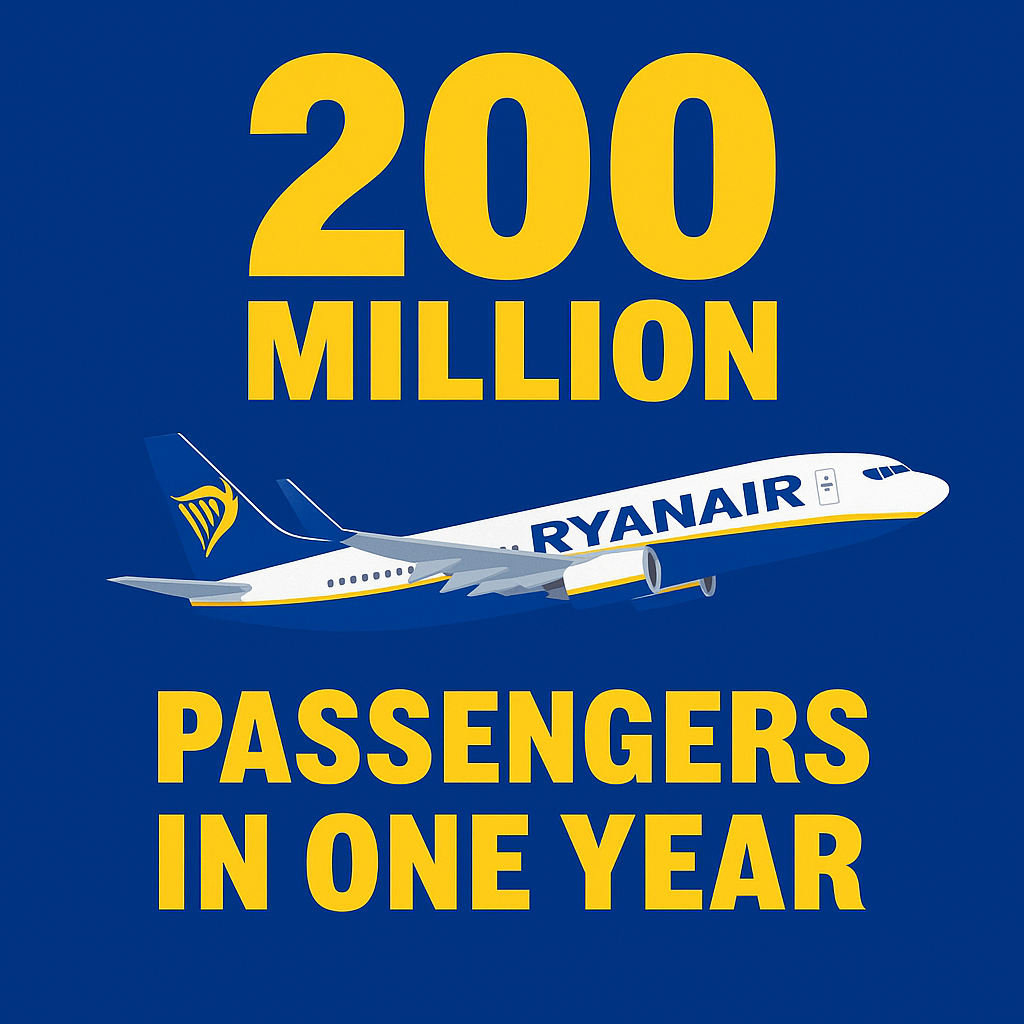Ryanair achieves a historic milestone in European aviation, becoming the first airline on the continent to surpass the threshold of 200 million passengers in a single calendar year.
This milestone comes at a dynamic time for the Irish airline, which continues to expand its route network across Europe, adding dozens of new destinations for the upcoming summer season. With this momentum, Ryanair further cements its position as Europe’s largest and most influential low-cost carrier.
In the previous fiscal year, Ryanair carried 187.3 million passengers — a figure that reflects a remarkable 9% year-over-year increase.
The historic achievement was recorded at the close of the financial year ending in March 2025. According to the airline, it stands as "proof of the company’s exceptional and consistent growth — despite market challenges, industry competition, and global disruptions to the travel sector."
Recognized as one of the world’s leading low-cost airlines, Ryanair has sustained steady growth for years, driven by a focused business model, an extensive European route map, and highly competitive fares that continue to attract millions of travelers every month.
In March 2025 alone, Ryanair flew 15 million passengers — a 10% increase compared to March 2024, when it carried 13.6 million. The airline’s performance is especially notable for its high load factors, reaching 93% for March 2025 and 94% over the past year. Ryanair also resumed flights to Israel last week, adding to its growing network.
With a fleet of hundreds of aircraft, frequent seasonal route launches, and a strong presence in both major and regional airports across Europe, Ryanair continues to position itself as a market leader that sets the pace for the entire aviation sector.
Looking ahead, the coming year is expected to be equally intense, with an expanded summer schedule, dozens of new routes, and strategic responses to evolving regulations — including passenger caps and rising airport fees at several European hubs.
The impressive figure of 200 million passengers isn’t just a record — it’s a new benchmark that redefines what’s possible in European commercial aviation.

